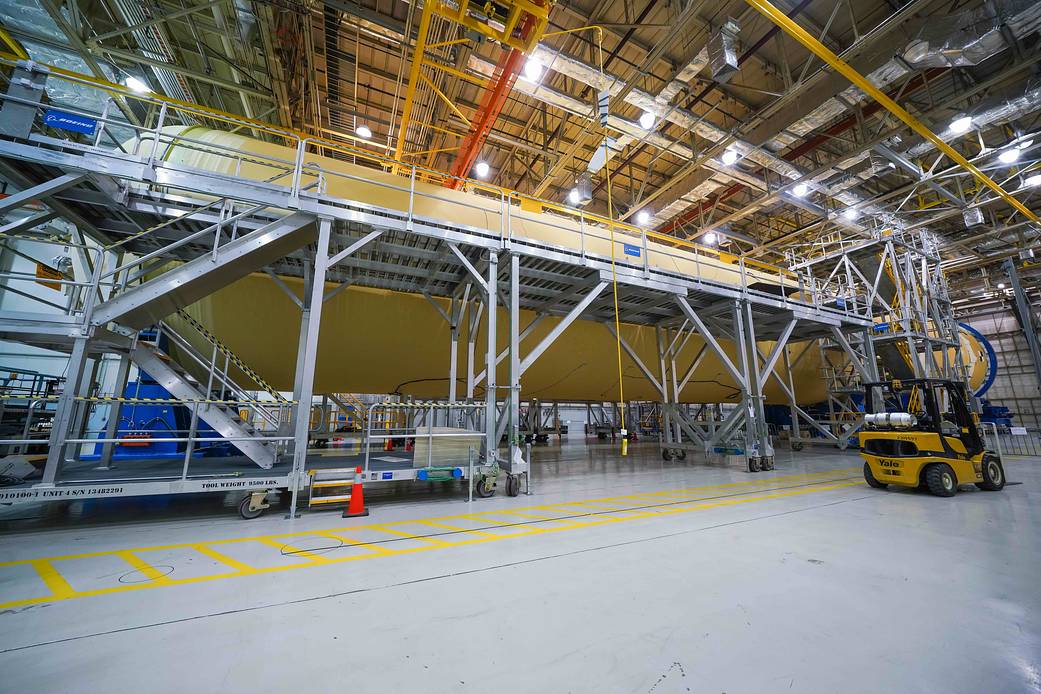
NASA and Boeing technicians have begun the second of three major activities to join the large structural parts of the core stage for NASA’s deep space rocket, the Space Launch System. When this task is completed, four of the five major core stage structures — most of the massive 212-foot stage– will be assembled. Boeing and NASA will add the engine section and the four RS-25 engines to complete assembly of the core stage. This stage and its four RS-25 engines will produce 2 million pounds of thrust to help send the Artemis 1 Mission, the first integrated flight of SLS and the Orion spacecraft to the Moon. Crews at NASA’s Michoud Assembly Facility in New Orleans moved the liquid hydrogen tank to the final assembly area at the facility to horizontally connect the massive propellant tank to the top of the core stage, which is made up of the forward skirt, the liquid oxygen tank and the intertank. They moved the forward structure to the final assembly area earlier this spring. Together, the forward structure combined with the liquid hydrogen tank is approximately 190-feet-long, and thus, makes up most of the core stage. The entire core stage will be the largest rocket stage NASA has ever built since manufacturing the Saturn V rocket stages in the same Michoud rocket factory.
NASA is working to land the first woman and next man on the Moon by 2024. SLS is part of NASA’s backbone for deep space exploration, along with Orion and the Gateway in orbit around the Moon. SLS is the only rocket that can send Orion, astronauts and supplies to the Moon on a single mission.
Image Credit: NASA/Steven Seipel


























